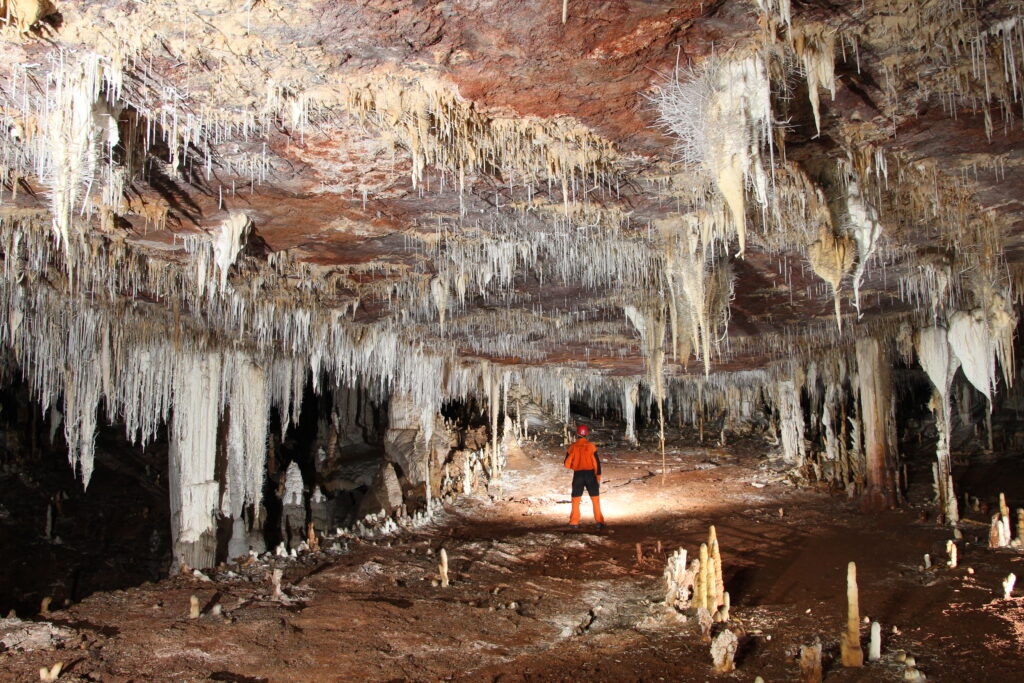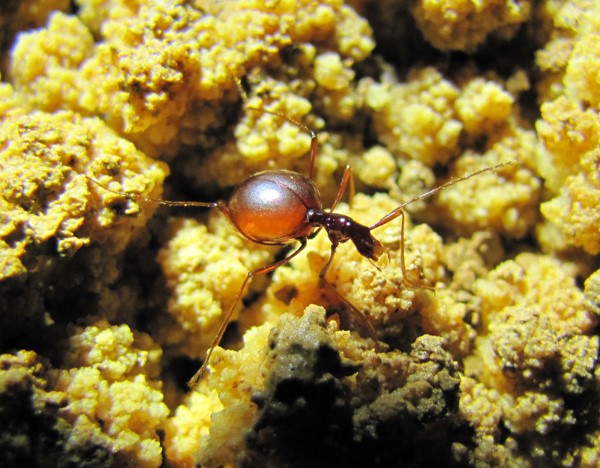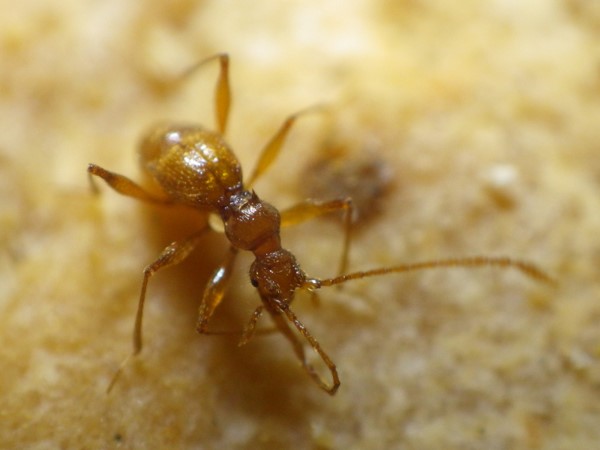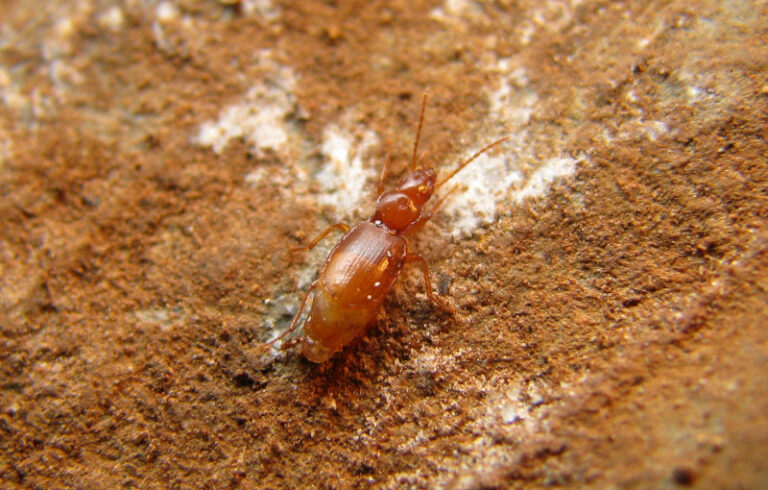Caves constitute underground spaces or voids which vary significantly in size (from only a few meters up to hundreds of kilometers); they house a great diversity of species which have evolved and specialized in these environments. The permanent absence of light and the scarcity of food resources have exerted a strong selective pressure on cave species, so that a large number of species have undergone expressive specialization for this type of environment and are thus incapable of survival outside the underground environment. Therefore, these species interact with each other in a fascinating and complex ecosystem, which may be able to provide valuable information about the evolution of life on our planet.

In the history of underground biology, the beetles are iconic. The first subterranean animal in the world described and scientifically recognized was a beetle. This brownish blind beetle with elongated legs was first found in 1831 by Luka Čeč, an assistant light keeper in the Postojna Cave system in southwestern Slovenia, when exploring new inner cave portions discovered some years before. He gave it to count Franc Hohenwart. It was then examined by the naturalist Ferdinand Schmidt (Slovenia), who in 1832 gave it the name of Leptodirus hochenwartii. Since then, various species of cave beetles have been described. The beetles, or the order Coleoptera, constitute the most diverse group of troglobite species in the world. In the underwater cave environment, the family of Dytiscidae stands out as the most frequent, whereas for subterranean terrestrial beetles, It is the Leiodidae and Carabidae families which are more prevalent.

In general, the beetles constitute the largest number of species of the living fauna of the planet, with approximately 400 thousand species known. In caves, they are also one of the most abundant – and diversified – groups, with species in a number of different families being especially prevalent in Brazil, including Carabidae, Staphylinidae, Tenebrionidae, Dermestidae, Curculionidae, Scydmaenidae, and Leiodidae. In Brazil today, 18 species of troglobitic beetles (species which live only in subterranean environments, including caves) have been described, with 13 from the Carabidae family, four from the Staphylinidae family, and one from the Dytiscidae family. Despite the elevated endemic nature of most of these 18 troglobitic species, only 10 are found on official lists of species threatened by extinction. The most typical group of troglobitic beetles already described includes the species selected for the first Brazilian participation in the campaign of “Cave Animal of the Year”. This is the genus Coarazuphium Gnaspini, Vanin & Godoy, 1998, which was first described in 1991, and which today has 11 subterranean species described.

In the past few years, the advance of studies of troglobitic coleopteras in Brazil has considerably expanded our knowledge of the distribution of this group in Brazilian caves. A decade ago, species had been found in four Brazilian states: São Paulo, Goiás, Bahia, and Minas Gerais. Today, they have been found in eight states, with the addition of Tocantins, Pará, Paraná and Mato Grosso (the one in this latter being in the process of description). A database compiled from the material found in the main collections of cave fauna in the country suggests that two regions of the national territory stand out in relation to the diversity of troglobitic coleopteran. The first is the iron ore caves in the Eastern Amazon basin in the Carajás Mountain range in the state of Pará (9 species, three new for science), and the second is in the southeastern part of the country, in the state of Minas Gerais (5 species, with three not yet described). In addition of the expressive diversity of troglobitic species, these two regions have in common the fact that they are important centers of mining in Brazil, which implies a threat to the subterranean biodiversity of the region and means that special attention must be given to its protection. Moreover, there are hundreds or even thousands of species yet to be discovered and described by science, both troglobites and non-troglobites.
Although the number of species described has increased in the past few years, the process of description is slow, and many troglobitic species have accumulated in biological collections without a formal description. This is due largely to the scarcity of human and financial resources destined for the formation of taxonomists and the limited absorption of these professionals in the national marketplace. Not only the delay in description, but also the absence of an evaluation of the state of conservation of species, are extremely troublesome. Unfortunately, the discovery of new species, even troglobites, does not necessarily guarantee the preservation of their habitat (caves), unless that species is officially labeled as endemic (of restricted distribution), rare, or on an official list of species threatened by extinction. However, such an evaluation will only be possible after specific studies have been conducted to make possible the effective analysis of their pattern of distribution in underground environments.

Occurrence locations of known troglobite beetle species in Brazil

Brazilian troglobitic beetles already described
| N | Family | Species | Authors and year of description | State where found |
| 1 | Carabidae | Schizogenius ocellatus * | Whitehead, 1972 | São Paulo |
| 2 | Carabidae | Coarazuphium tessai * | Godoy & Vanin, 1990 | Bahia |
| 3 | Carabidae | Coarazuphium bezerra * | Gnaspini, Vanin & Godoy, 1998 | Goiás |
| 4 | Carabidae | Coarazuphium cessaima * | Gnaspini, Vanin & Godoy, 1998 | Bahia |
| 5 | Carabidae | Coarazuphium pains * | Alvares & Ferreira, 2002 | Minas Gerais |
| 6 | Carabidae | Coarazuphium formoso* | Pellegrini & Ferreira, 2011 | Bahia |
| 7 | Carabidae | Coarazuphium tapiaguassu* | Pellegrini & Ferreira, 2011 | Pará |
| 8 | Dytiscidae | Copelatus cessaima* | Caetano, Bená & Vanin, 2013 | Pará |
| 9 | Carabidae | Coarazuphium caatinga* | Pellegrini & Ferreira, 2014 | Bahia |
| 10 | Carabidae | Coarazuphium ricardoi* | Bená & Vanin, 2014 | Paraná |
| 11 | Carabidae | Coarazuphium amazonicum | Pellegrini & Ferreira, 2017 | Pará |
| 12 | Carabidae | Coarazuphium spinifemur | Pellegrini & Ferreira, 2017 | Pará |
| 13 | Staphylinidae | Metopiellus painensis | Asenjo, Ferreira & Zampaulo, 2017 | Minas Gerais |
| 14 | Carabidae | Ardistomis ferreirai | Balkenohl, Pellegrini & Zampaulo, 2018 | Pará |
| 15 | Staphylinidae | Oxarthrius aurora | Asenjo, Zampaulo & Ferreira, 2018 | Tocantins |
| 16 | Staphylinidae | Oxarthrius inexpectatus | Asenjo, Zampaulo & Ferreira, 2018 | Minas Gerais |
| 17 | Staphylinidae | Metopioxys carajas | Asenjo, Pietrobon & Ferreira, 2019 | Pará |
| 18 | Carabidae | Coarazuphium lundi | Pellegrini, Ferreira, Zampaulo & Vieira, 2020 | Minas Gerais |


















